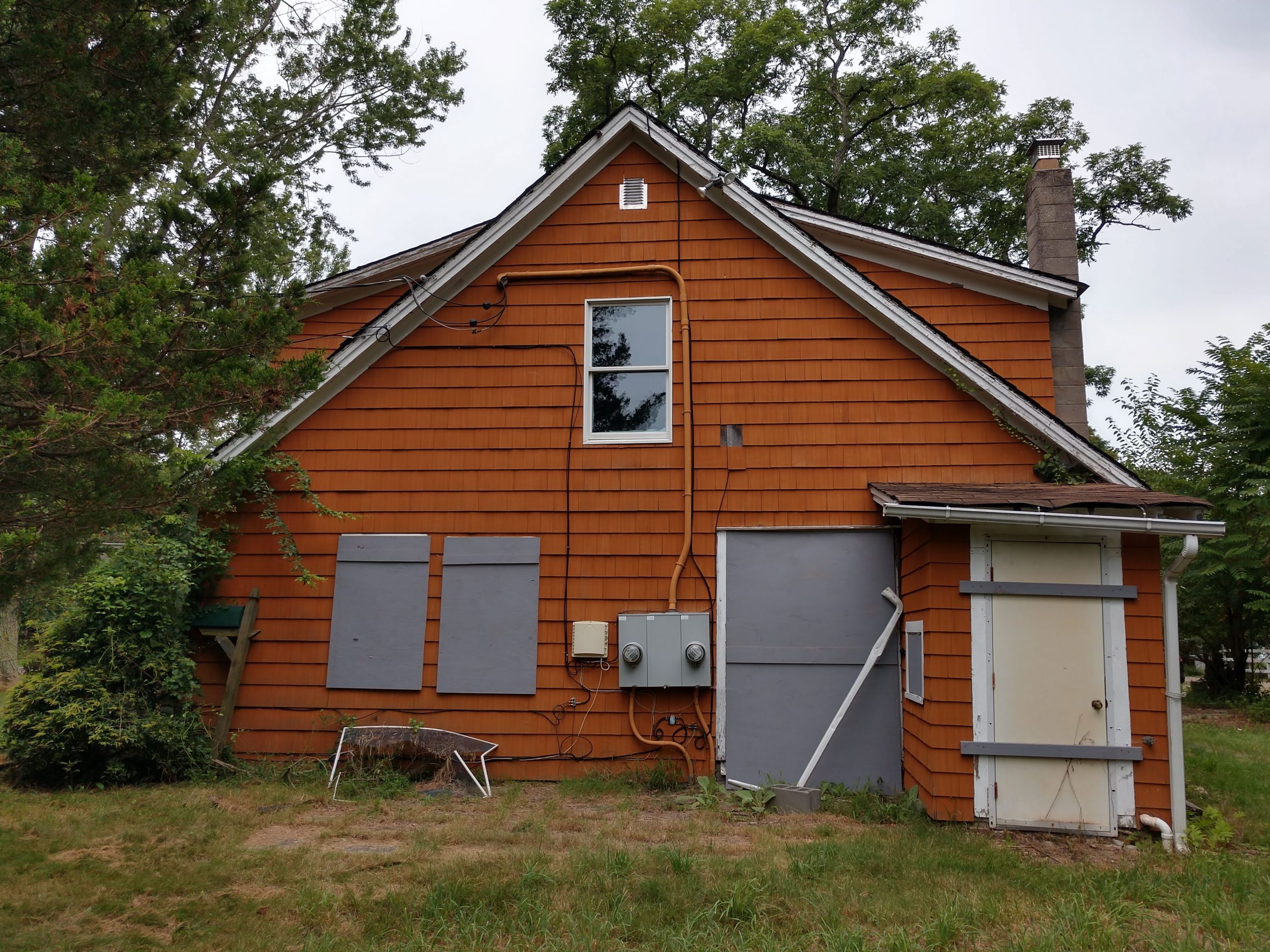Advocacy Updates:
February 29, 2024:
October 2022:
Update! Endangered Historic Places 2021: William Tooker House
ACTION ALERT!
Attention residents of Port Jefferson! Join us in supporting the William Tooker House at 49 Sheep Pasture Road, Port Jefferson Station, NY. If you live in the Village of Port Jefferson, please contact your local elected officials to let them know you support preservation of the William Tooker House and other long-overlooked historic properties in Port Jefferson Station!

Why is the William Tooker House historically significant?
Constructed before 1750, this house is the oldest known structure in Port Jefferson Village still located at its historic building site. One of its first occupants, William Tooker, was born into a family of early Long Island colonists (the surname Tooker is also spelled Tucker in 17th-century records). Historic wills indicate William was the son of John Tooker II (ca. 1642–1752) and the grandson of Captain John Tooker (ca. 1615–1692). William’s grandfather, Captain Tooker, was among the first settlers of Southold (established 1640) and Setauket (established 1655). Captain Tooker helped to acquire land from indigenous peoples of the Setalcot and Unkechaug tribes throughout the present-day townships of Riverhead and Brookhaven. According to Captain Tooker’s will (dated 1688, amended 1690), John Tooker II inherited his father’s property at “Christall Brook Neck” and “Old Man’s,” known today as Mt. Sinai, Belle Terre, and eastern Port Jefferson.
John expanded his holdings into Drowned Meadow and Comsewog, places known today as downtown Port Jefferson and Port Jefferson Station. William inherited John’s lands in Comsewog, which presumably encompassed what is know 49 Sheep Pasture Road. John Tooker II’s will (dated 1750) reads: “I leave to my second son, William Tooker, all my lands at a place called Comsewog, on the north side of the upper road that leads to town, with the house he now liveth in and all the land belonging to it and adjoining.”
The “upper road” mentioned in John’s will appears to be Sheep Pasture Road, which led to colonial settlements in Setauket to the west and Southold to the east. Sheep Pasture Road was once part of the old King’s Highway, a British colonial roadway built along ancient Native American footpaths through the North Shore’s hilly uplands. After the Revolutionary War, many descendants of the colonial Tooker family remained in the area and prospered during the heyday of American whaling and shipbuilding in Port Jefferson.
The New York State Historic Preservation Office determined this property eligible for listing on the National Register of Historic Places in 2020.

Why is the William Tooker House endangered?
This site is threatened by neglect, demolition, and urban-renewal. Unfortunately, like many other overlooked historic properties on Long Island, the William Tooker House suffers from insensitive later alterations that partly obscure its remarkable ties to colonial history.
An accurate up-to-date survey identifying all historic resources surrounding the Tooker House is urgently needed to fully appreciate Port Jefferson Station’s development over the last 200+ years. Without this information, municipal officials lack adequate information to identify and protect the community’s surviving historic resources from demolition and urban renewal.
Moreover, potentially eligible owners of undesignated historic properties in Port Jefferson Station are missing out on opportunities for tax credits and other financial incentives made possible by listing on the National/State Registers of Historic Places.
How can the William Tooker House be preserved?
Preservation Long Island joins local community members, including the Greater Port Jefferson Historical Society and Port Jefferson Station/Terryville Chamber of Commerce in advocating village officials to pursue the following actions for preserving this site:
- (Completed) Acquire and preserve the property as an important historic site in collaboration with community stakeholders and nonprofit stewardship partners. (Contract of Sale to purchase of the property executed by Village of Port Jefferson on October 3, 2022).
- Leverage pledges of public funding to raise dollar-for-dollar matching contributions from private donors and foundations. Private matching funds could help support rehabilitation work as well as future public programming provided by nonprofit stewards.
- Sponsor a new survey, in partnership with the Village of Port Jefferson, to identify and designate all historic resources and historic districts, north and south of the railroad, in the community of Port Jefferson Station.
- Incorporate recognition and rehabilitation of Port Jefferson Station’s long-overlooked historic and cultural resources in downtown revitalization plans. For example, Port Jefferson Station has great potential for listing on the National/State Register as a downtown historic district, which would open possibilities for tax credits and other financial incentives.
- Seek additional guidance for preservation planning and decision-making from experts at New York State Historic Preservation Office’s Technical Preservation Services Bureau.
Sources and further reading:
•Determination of Eligibility for the National Register of Historic Places, William Tooker House, 49 Sheep Pasture Road, Port Jefferson (2020) New York State Historic Preservation Office
Preservation Long Island’s Endangered Historic Places Program is made possible in part by a grant from the New York State Council on the Arts with the support of Governor Andrew M. Cuomo and the New York State Legislature.




